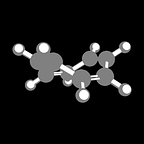Calculating Chemistry’s Most Famous Number
Avogadro’s Number (6.02*10²³) was first conceptualized by Loschmidt, then first calculated by Perrin and Millikan
Avogadro did not discover Avogadro’s Number
You know this. However, Amadeo Avogadro is responsible for the initial hypothesis that spawned the subsequent calculations of his namesake number. His hypothesis stated that all gases have the same number of particles in a given volume as long as the temperature and pressure are the same. He also hypothesized the existence of diatomic elements. If any of this is unclear to you, I highly recommend reading my previous stories about the topic.
Those discussions begged the question, “well, how the hell do you calculate Avogadro’s Number then?!”
Before we get into that, we should probably answer a more important question: “what’s so important about Avogadro’s Number?” In my own terms, Avogadro’s Number (N with subscript A is the symbol used to represent Avogadro’s Number, but medium doesn’t allow subscript, so I’ll be using N because I’m lazy) is method of counting that converts the “molecular” or the “atomic” into the “macro.” Chemists use “moles” so that we don’t have to count individual molecules when performing experiments. It’s also used to make chemistry more relatable to the layman or laywoman. So, what is a mole?
